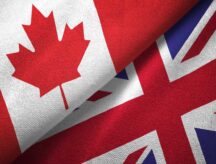How to improve Canada’s Parents and Grandparents immigration program in 2020
January has typically marked the opening of the window for immigrants to express their interest in sponsoring family under Canada’s Parents and Grandparents Program, or PGP.
However, given the challenges Canada has had managing the PGP and the recent federal election in October, it remains unknown as to when the PGP intake window will open in 2020 and what the application process will look like.
This provides an opportunity to think of innovative solutions that could help improve the PGP. For instance, the federal government might consider launching a new Parents and Grandparents Human Capital Pilot.
PGP costs and benefits
Canada is keeping its PGP intake target stable at about 21,000 people under its 2019-2021 Immigration Levels Plan.
The PGP accounts for only six per cent of all newcomers to Canada because its economic benefits are not as strong as Canada’s other social immigration streams.
It is more beneficial to Canada’s economy to welcome spouses and other dependents, as well as refugees, who tend to arrive at a younger age and will contribute more in working hours and taxes than the average parent and grandparent. The time these former groups spend working in Canada will help to subsidize the health care they will require later in life, whereas parents and grandparents arrive in Canada at ages when they need health care the most, even though they will have yet to contribute in taxes.
There is, however, an economic justification for welcoming parents and grandparents. They provide child care, which enables their families to save money and earn more income by working extra hours. They also help to supplement the household income by working in Canada themselves. This helps us understand why data from the 2016 Census show that immigrant families tend to have nearly identical homeownership rates (69 per cent) and household incomes as Canadian-born families (CAD 85,000 annually).
We must also take into consideration the PGP’s social benefit: strong families are the bedrock of Canadian society.
Find out if you are eligible for the Parents and Grandparents Program
Frustration abounds
Given that some 100,000 people tried to access a request to sponsor form in January 2019, vying for just 21,000 PGP spots, pleasing everyone is an impossible task and the PGP process has inevitably become a source of widespread frustration.
The federal government has recognized the limitations of the different approaches that it has tried to process PGP applications. It previously operated a first-come, first-served model where it would review applications in the order in which they were received. By 2011, this had produced a backlog of about 165,000 PGP applications. Processing times were over five years which meant that unfortunately, some parents and grandparents passed away before their application could be reviewed.
To tackle the backlog, Canada announced in 2011 that it would temporarily freeze new PGP applications and increased its PGP intake target from about 15,000 annually to 25,000 people in 2012 and 2013, before reducing it to the current target.
In 2017, the federal government introduced a lottery system for the PGP. Interested sponsors had 30 days to submit an expression of interest and the government then randomly selected candidates and invited them to apply to sponsor family.
While this approach was innovative, it had several limitations. Applicants were uncertain if their family member would ever make it into Canada. There were also applicants who were not serious about sponsoring their parents or grandparents—some of them were randomly selected but they never went ahead and submitted an application, regrettably causing delays for the federal government and more genuine candidates.
The federal government returned to a first-come, first-served approach in January 2019. The government set a date and time when the PGP Interest to Sponsor form would be made available online and accepted the first 27,000 submissions. This approach again proved problematic as more than 100,000 people tried to access the form at the same time and the submission period lasted about 10 minutes before the quota was met. Many could not access the form and others that did could not complete it on time, leading to renewed criticism of the process.
Federal government should not be afraid to innovate
We can expect another revamped version of the PGP in 2020. Since the demand to sponsor will continue to exceed the number of available spots, managing the PGP to everyone’s satisfaction will never be possible. But recent lessons provide us with a roadmap of how the federal government can proceed prudently.
First, dropping the expression of interest approach in favour of a return to an application-based model would solve a key headache for the government. This move would require giving stakeholders advance notice of when the application window will open so they can prepare their documentation. When the window does open, the federal government needs to give sponsors a reasonable amount of time to submit an electronic or paper-based application. To avoid overburdening the system, the federal government can increase efforts to attract genuine candidates by requiring that they pay the sponsorship fee in full upfront.
Second, the federal government can adjust its immigration levels based on the number of applications it receives. This would require more flexibility to, say, welcome up to an additional 10,000 PGP in certain years to ensure a reasonable processing standard (e.g., within three years).
Third, it can continue to promote its Super Visa that enables parents and grandparents to visit Canada multiple times for a period of up to 10 years. The Super Visa has been criticized for requiring these individuals to obtain private health insurance, which may be unaffordable for some families, but it at least provides families with certainty that they will be able to reunite with their loved ones. Moreover, encouraging greater use of the Super Visa would take the pressure off the PGP.
Fourth, the federal government can explore other innovative approaches to managing the PGP. Despite the criticism of its efforts to better handle the PGP in recent years, a key reason why Canada’s immigration system is so successful is the federal government’s willingness to find new solutions to longstanding challenges, such as managing backlogs. The introduction of the Express Entry system in January 2015 is a case in point.
Parents and Grandparents Human Capital Pilot
One innovation for consideration is introducing a human capital-based approach to managing some PGP applications. The federal government could launch an Economic Class pilot whereby parents and grandparents who are younger in age and have higher levels of education, work experience, and English or French proficiency would get first preference. The pilot would complement the existing PGP Family Class stream and the Super Visa.
One of the reasons the pilot would be novel is that candidates under federal Express Entry-managed programs receive fewer points once they hit a certain age (a candidate gets no points for their age once they turn 45).
Under the Parents and Grandparents Human Capital Pilot, the federal government could welcome up to 2,750 principal applicants per year (the maximum number allowed under a pilot). This figure would likely be more in the neighbourhood of 3,500 parents and grandparents per year since a share of principal applicants would be accompanied by their spouses.
This idea may be unpopular since critics could argue the PGP exists to strengthen Canadian society, not its economy. But this pilot could at least expedite processing for individuals who meet its criteria and would reduce the number of applications submitted to the PGP, which would help to improve PGP processing times.
Moreover, it is an idea that would be easier to sell to the Canadian public. Previous federal government research has indicated the PGP has less public support than other immigration streams. This is likely due to the perception the PGP has little economic benefit and is a burden to the health care system.
However, by bringing in parents and grandparents who are younger and possess stronger human capital, the federal government could make the argument that such individuals are more likely to contribute to the labour market as workers and could help subsidize the health care they will eventually need in Canada.
The future of the PGP in 2020 remains uncertain. The only certainty is it will remain difficult for Canada to manage a program with some 100,000 people vying for just 21,000 spots.
Find out if you are eligible for the Parents and Grandparents Program
© 2019 CIC News All Rights Reserved
- Do you need Canadian immigration assistance? Contact the Contact Cohen Immigration Law firm by completing our form
- Send us your feedback or your non-legal assistance questions by emailing us at media@canadavisa.com







